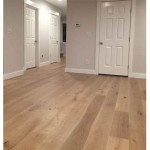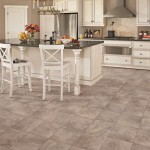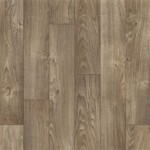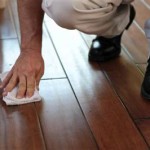Vinyl wood flooring is a great option for those looking for a durable and affordable flooring solution. Not only is it easy to install, it is also highly resistant to water damage and stains. Installing vinyl wood flooring is not as difficult as some may think, and with the right tools and materials, it can be done in a relatively short amount of time. In this article, we will discuss the basics of vinyl wood flooring installation, and what you need to know before beginning the process.
Preparation
Before beginning the installation process, it is important to prepare the area. Vinyl wood flooring needs to be installed on a flat, level surface. Any bumps or dips in the flooring can cause the vinyl to warp and buckle, so it is important to make sure that the surface is as level as possible. If your subfloor is not level, you may need to use a self-leveling compound before beginning the installation. Additionally, it is important to make sure that the area is free of dirt, dust, and debris before laying the vinyl down.
Materials
In order to install vinyl wood flooring, you will need a few materials. These include the following:
- Vinyl wood flooring
- Underlayment
- Level
- Tape measure
- Utility knife
- Adhesive
- Hammer and nails (optional)
Installation Process
Once you have gathered all of the necessary materials, it is time to begin the installation process. The first step is to lay down the underlayment. This material helps protect the vinyl from moisture and also provides a more comfortable walking surface. Make sure to lay the underlayment in the same direction as the vinyl planks and use a level to make sure it is even. Once the underlayment is in place, it is time to begin laying the vinyl planks.
Start at one corner of the room and lay the first row of vinyl planks. Make sure that the planks are aligned properly and use a level to ensure that they are even. Once you have the first row in place, you can begin laying the remaining rows. Make sure to stagger each row so that the planks are not all in a straight line. Staggering the rows helps to create a more visually appealing look and will make the floor more stable.
When all of the planks have been laid, it is time to secure them. Depending on the type of vinyl flooring you have chosen, there are a few different options for securing the planks. Some types of vinyl planks are designed to be glued down, while others can be secured using a hammer and nails. If you are using glue, make sure to apply it evenly and allow it to dry before walking on the floor.
Maintenance
Vinyl wood flooring is relatively low maintenance, but there are a few things that you will need to do to keep it looking its best. The first and most important step is to sweep or vacuum the floor regularly to remove any dirt or debris. Additionally, it is important to mop the floor with a mild cleanser and warm water. Make sure to wring out the mop thoroughly before mopping the floor to prevent any water damage. Finally, you should use felt protectors on any furniture to prevent scratches or dents.
Conclusion
Vinyl wood flooring installation is not as difficult as some may think, and with the right tools and materials, it can be done in a relatively short amount of time. Before beginning the installation process, it is important to make sure the area is level and free of dirt and debris. Additionally, you will need to gather the necessary materials, such as vinyl wood flooring and underlayment. Finally, once the planks are laid, they can be secured using either glue or nails. Regularly sweeping or vacuuming the floor, as well as mopping with a mild cleanser, will help keep your vinyl wood flooring looking its best for years to come.






:max_bytes(150000):strip_icc()/easy-install-plank-vinyl-flooring-1822808-09-a1f83db7bdf74f279f45594b897de82d.jpg)
:max_bytes(150000):strip_icc()/easy-install-plank-vinyl-flooring-1822808-02-19a3b80cd59943938a401560203706f3.jpg)

:max_bytes(150000):strip_icc()/easy-install-plank-vinyl-flooring-1822808-06-3bb4422ca1bd49b080bfa73bce749acc.jpg)


:max_bytes(150000):strip_icc()/easy-install-plank-vinyl-flooring-1822808-07-9e82b716c3e94264b4a6084e174e9aeb.jpg)
:max_bytes(150000):strip_icc()/easy-install-plank-vinyl-flooring-1822808-05-91e4c44966a145a39ad38430e4f7cc45.jpg)

Related Posts








